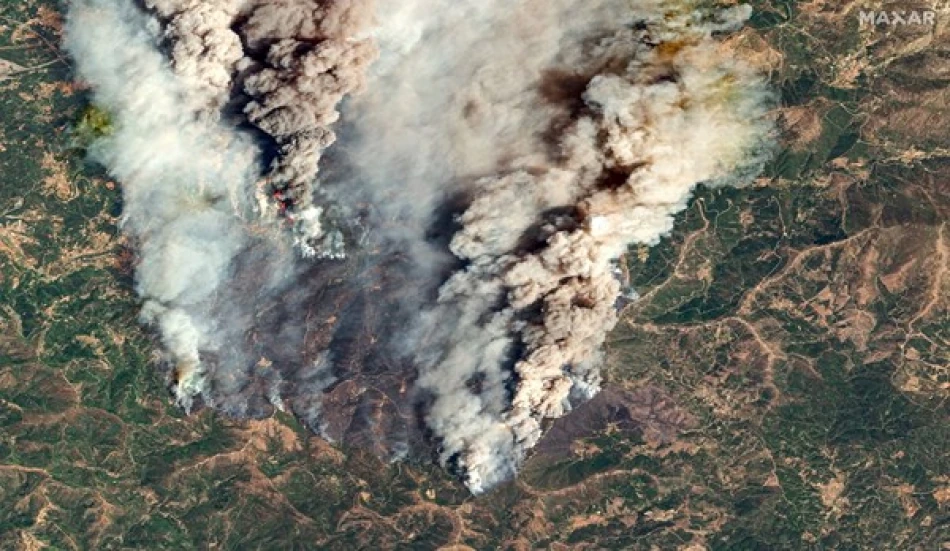
Raging Wildfires Consume Over 343,000 Hectares Across Spain in 2025
Spain's Wildfire Crisis Reaches Breaking Point as 343,000 Hectares Burn in Record-Breaking Year
Spain is confronting its worst wildfire season on record, with flames consuming over 343,000 hectares since January—surpassing the previous 2022 record of 306,000 hectares. The crisis has forced mass evacuations, claimed four lives, and shrouded entire regions in toxic smoke, highlighting Europe's growing vulnerability to climate-driven disasters.
Unprecedented Scale of Destruction
The current wildfire season represents a stark escalation in Spain's battle against forest fires. Residents in León, northwestern Spain, describe apocalyptic conditions where visibility drops to mere meters due to dense smoke. "There's a kind of fog everywhere. We can't see mountains just one kilometer away, and some people are wearing masks," reported one local resident.
The fires have been raging for approximately fifteen days across multiple regions, with the hardest-hit areas including León, Galicia in the northwest, and Extremadura in the west. The European Forest Fire Information System confirmed Monday that Spain's burned area this year has shattered all previous records.
Human and Economic Toll Mounts
Beyond the environmental devastation, the human cost continues to climb. Four people have died in Spain, while livestock farmers scramble to relocate their herds to safer pastures. In Benavente, located 100 kilometers from active fire zones, residents report suffocating conditions where smoke blocks sunlight until 11 AM.
"The air is stifling, the smoke density is enormous, and the smell of fire penetrates homes," said 47-year-old José Carlos Fernández, capturing the daily reality for thousands of Spaniards.
Regional Context: Iberian Peninsula Under Siege
Spain's crisis mirrors broader patterns across the Iberian Peninsula. Combined with Portugal, over 560,000 hectares have burned this year, claiming six lives total. Portugal holds Europe's most devastating fire record since data collection began in 2006—563,000 hectares destroyed in 2017, killing 119 people.
Climate Change Amplifies Fire Risk
The current outbreak coincides with an intense heatwave that pushed temperatures to 45°C in southern Spain—conditions that transform forests into tinderboxes. While Spanish meteorological services report the heatwave is finally receding after more than two weeks, the damage reflects a troubling trend across Mediterranean Europe.
These extreme conditions align with climate scientists' predictions for southern Europe, where rising temperatures, prolonged droughts, and shifting precipitation patterns create ideal conditions for megafires—blazes that exceed traditional firefighting capabilities.
Emergency Response Stretched to Limits
Spanish authorities currently monitor 23 active Level 2 fires—the second-highest classification on a four-tier scale, indicating "serious and direct threats to population." Virginia Barcones, Spain's Director General of Civil Protection and Emergencies, emphasized the unprecedented challenge facing emergency services.
In Portugal, nearly half of the country's 2,000 deployed firefighters are concentrated around a single massive blaze near Arganel in the central region, demonstrating how quickly resources become overwhelmed during simultaneous outbreaks.
Economic and Insurance Implications
The record-breaking fire season carries significant economic consequences beyond immediate suppression costs. Agricultural losses, tourism disruption, and infrastructure damage typically reach hundreds of millions of euros during severe fire years. Insurance companies across southern Europe are already reassessing wildfire risk models, potentially leading to higher premiums for properties in fire-prone areas.
Looking Ahead: Adaptation Becomes Essential
Spain's 2023 fire season underscores the urgent need for enhanced prevention strategies, improved early warning systems, and landscape management that reduces fire fuel loads. The country's experience serves as a preview of challenges facing other Mediterranean nations as climate change intensifies fire weather conditions across the region.
The current crisis demonstrates that traditional firefighting approaches may prove insufficient against the scale and intensity of future wildfire seasons, demanding fundamental shifts in how European nations prepare for and respond to fire threats.
 Layla Al Mansoori
Layla Al Mansoori







